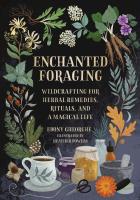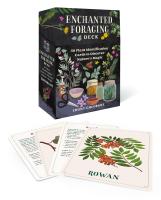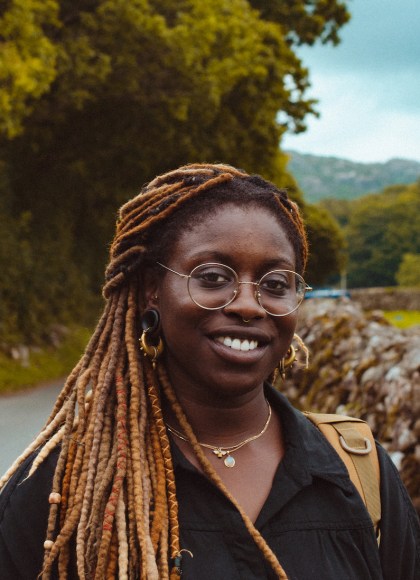Autumn Wildcrafting with Enchanted Foraging by Ebony Gheorghe

Autumn is the perfect time of year to get back outside and reconnect with nature. Make your adventures even more magical by foraging for berries, herbs, and roots to craft your own natural balms, poultices, syrups, teas, and more.
For expert guidance, we turn to Enchanted Foraging: Wildcrafting for Herbal Remedies, Rituals, and a Magical Life and the Enchanted Foraging Deck: 50 Plant Identification Cards to Discover Nature’s Magic by geoscientist and founder of Nettles and Bees Ebony Gheorghe. This enchanting book is filled with instructions for herbal remedies made from foraged ingredients, wildcrafts for rituals to usher in each season, rituals inspired by mystical folk practices around the world, and tips for foraging correctly, mindfully, and sustainably to cultivate a more meaningful relationship with Mother Earth.
Read on for important foraging basics, plus a recipe for a Quick Root Decoction for digestive stimulation and an enchanting Midautumn Festival ritual to usher in the fall season inspired by the Chinese moon festival.
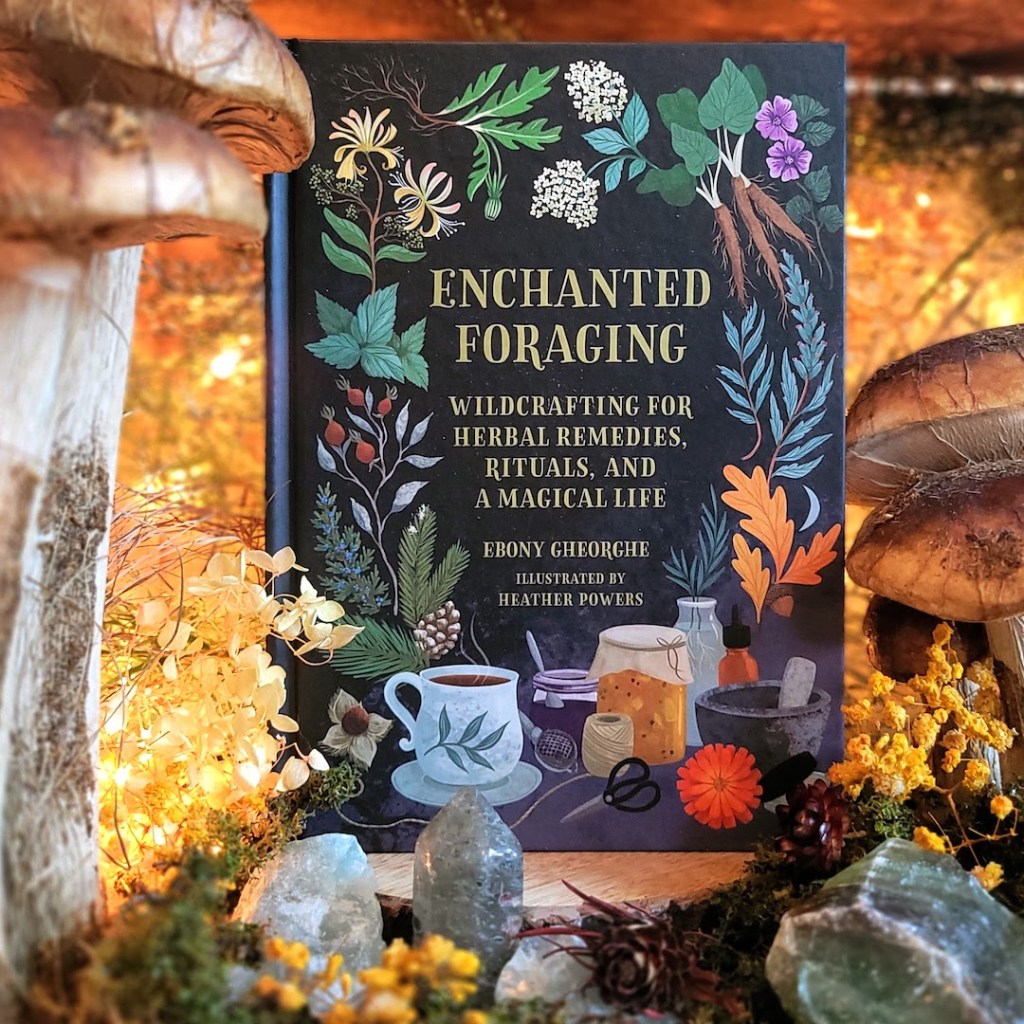
This book, including the below excerpt, is intended only as an informational guide for those wishing to know more about the subject of this book. It is not intended to replace the advice of a physician or qualified health care provider or be a substitute for health-related advice. Neither the author nor the publisher shall be liable or responsible for any loss or damage allegedly arising from any information or suggestion in this book.
First Things First
Before you start foraging, whether you have done it before or are completely new to it, there are a few things to keep in mind:
NEVER eat or use something that you’re not 100 percent certain about. Double and triple check, and then check again to be sure about what you have found. If you can’t identify a plant, it’s probably not a good idea to touch it, much less ingest it into your body. Mother Nature can be a gentle teacher, inviting you to explore with an open embrace, but at the same time, she can be harsh and humbling. Keep in mind she holds the potential for medicine, food, and other resources in such plants as echinacea, nettles, and chanterelles, but she can also be poisonous, as is the case with such plants as deadly nightshade, foxgloves, hemlock, hemlock water dropwort, fly agaric (toxic on ingestion), death caps and webcaps, just to name a few.
Proceed with adequate caution. I don’t suggest the beginners start foraging plants from the carrot family (Apiaceae or Umbelliferae) when at least four species in that family are known to be poisonous. When plants or mushrooms are poisonous, the effects can vary from mild upset stomach to vomiting, to death. That is a pretty large range. You may be eager to begin wildcrafting with what you’ve found, but the best way to nurture your excitement is to take things slow. Knowledge will collect eventually, and in kinder ways than by eating (or touching) something you shouldn’t have.
Consider sustainability. As foraging becomes more popular, fungi and psilocybin have received more media coverage than ever. These wonderful living beings provide medicine, food, and also tidy up the land. Not to mention, they’re gorgeous and strange, and endlessly fun to look at. However, this recent obsession for mushrooms has resulted in hordes of people overharvesting or rushing to harvest them when they have not been properly identified. Don’t pick something just to post a picture on social media. Appreciation and observation can be expressed without the continued human need for possession.
Respect the plants and the wild. Related to sustainability, when you plan to harvest, keep in mind that these are living beings and that being thankful to them is a good gentle practice of gratitude. When I harvest plants, I tend to ask for permission. Sometimes, I. forget because, after all, I am human. I believe saying thank-you is important and almost completes the cycle of the activity for the time you have set aside for it. It’s up to you how or whether you voice this gratitude.
Mind the law. It’s important to remember that some places may not be yours to roam. This could be because it could be someone’s property, home, or protected land. Land legislation will differ depending on where you are. If you’re not sure about the laws where you are, a search on the internet never hurts.
Listen to your body. Check precautions for anything you plan to use topically or internally. Something that’s perfectly fine and beneficial for one person may not sit well with another, depending on preexisting health conditions, such as allergies. Listen to your body and to your doctor’s advice.

Foraging Essentials
You don’t need too much when foraging, but be sure to have these items:
- A bag, foraging pouch, or basket for harvesting
- Water bottle to stay hydrated
- Gloves to protect your hands
- Gardening scissors
- Identification book or app
- Notebook and writing utensil, to take notes as you explore
- Camera or phone to photograph all the wonderful things you find
When harvesting, keep in mind:
Where you are cutting matters. Cut about 2½ inches (5 cm) from the top of the plant. It is not necessary to uproot a plant unless you will use the plant’s roots as well. This way, when you leave the root alone, the plant can regrow.
Poisonous plants. Keep in mind that some plants cause photochemical reactions if you brush against them and are exposed to sunlight. An example of this is with giant hogweed (Heracleum mantegazzianum), so approach with caution when observing, as you can get a nasty burn reaction if the sap from this plant gets on your skin. This is also why it’s crucial to wear gloves. Make sure you check for the look-alikes to poisonous plants; for example, poison ivy (Toxicodendron radicans), which causes a nasty skin reaction, notably has three leaves that appear together. This can be mistaken for Virginia creeper (Parthenocissus quinquefolia), which is a harmless vine look-alike with five leaves appearing together.
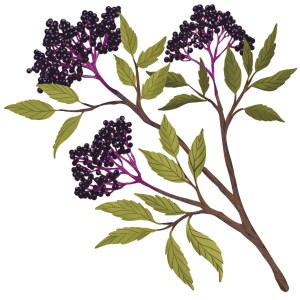
Location
Harvest away from possible pollution or contamination. This can include air pollution or chemical contamination through soil. This can be in the form of pesticides or herbicides that have been sprayed on plants or whole areas. Specifically think about areas near roadsides (or picture-perfect manicured lawns) in neighborhoods as well as areas that are maintained by local organizations. This can sometimes include some parks and woodland areas. They do not necessarily intend to allow weeds or wildflowers to grow wild, so before picking things like dandelions in areas where you usually see local organized workers cutting, I would advise against picking here.
Harvest away from high-traffic areas, as car emissions can also pollute plants. I have noticed a good amount of crab apples growing by roadsides, but these areas are always road-blocked with cars. The idea of the hazardous pollution in this area always puts me off the thought of harvesting here.
Harvest away from poisonous plants. Avoid harvesting a plant when it is in close proximity to a poisonous plant.
Lastly, safety is key. Whether you forage alone or with a friend, remember to be safe, know where you are, and be aware of your surroundings. If you plan to go somewhere wilder or off the grid, notify people of your whereabouts and plan accordingly.
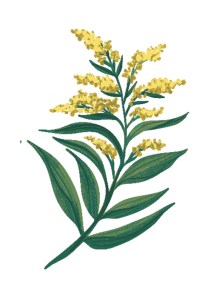
Cultivating a Harmonious Relationship with Nature
A modern-day relationship with Nature can be enchanting because of the connection you can build, not only with the land around you but with yourself. The world we live in is so fast paced and busy that sometimes, when we pause, we often feel miserable or discontent, looking for something to fill the gap or just that moment. Instead of dreading those pauses, what if we could enjoy them? Or find a way to make it meaningful? Foraging and wildcrafting offer us ways to get in touch with the outdoors, but at the end of the day, it’s really we who benefit from these practices, the more we make time for them.
It’s so important as adults for us to pursue personally meaningful hobbies and carve out intentional time for ourselves, where we can simply be with ourselves. When you pass hedgerows or walk through a field, acknowledge the spirit of the plants, the forest, and Earth. Connect with your natural instincts, breathe in the essence of the world, let your eyes wander, and observe not just what you see, but how it makes you feel.
The term rewilding has different meanings in different contexts, but to me it means rediscovering our ancestral and primitive ties to Nature, and using natural resources for herbalism, arts, wildcrafting, and in giving back. In the next section of this book, you’ll find not only foraging advice and different activities to try, but also traditions and rituals from around the world that honor our sacred connection to Nature—how magical and mysterious it is, how it provides for us and challenges us, and how we cannot live without it. Across different cultures, Nature is consistently viewed as a powerful living entity. You’ll also find inspiration for creating your own traditions and rituals to infuse a bit of magic into your day-to-day life, so that the next time a moment of reprieve from its bustle comes, you’ll know what to do. Take a deep breath, step outside, and be enchanted by what the natural world has to offer. Nature, as it cycles through its own seasons, can help us move through the different seasons of our lives, whether we’re at the beginning of something—a new career, a new love—or the end, or somewhere in the middle. Just like the grass, trees, flowers, and fruit you’re about to learn about, you, too, are constantly growing, constantly in motion, constantly beginning anew.

Quick Root Decoction
We’ve talked a bit about roots and this recipe will show you a simple way to extract their medicinal benefits to use internally or externally. It produces a bittering and digestive stimulating mixture; however, feel free to add more berries or dried barks, such as willow (Salix spp.), for a pain-relieving tea, or slippery elm (Ulmus rubra) for a soothing acid reflux–reducing and digestive tea.
Essentially, a decoction is like a strong tea, but due to the nature of the ingredients (roots, bark) you have to put some oomph into the infusion rather than letting it steep as you would a flower or leaf.
Ingredients:
3 tablespoons (30 g) dried berries of choice, such as hawthorn (optional)
1 ¾ ounces (50 g) dried burdock root
1 ¾ ounces (50 g) dried dandelion root
1 ⅔ cups (400 ml) water
Materials:
Medium-size pot
Strainer
Combine all the ingredients in your pot, including the water. Heat until it starts to boil, then allow to simmer over medium heat for 20 minutes. For a stronger infusion, simmer for a few more minutes but top up the water, if needed. When finished, turn off the heat and let cool. You should be left with a consistency of a very strong tea.
Once cooled, strain and store in the fridge. Decoctions can be used as a tea, in syrup recipes, or for skin care.
Spotlight on Dandelion, Courtesy of the Deck

SCIENTIFIC NAME: Taraxacum officinale
LOCATED IN: Asia, Europe, and North America
BEST TIME TO FORAGE: Roots in Autumn; flowers and leaves in Spring and Summer
IDENTIFIERS:
• Grows in meadows, gardens, woodlands, and hedgerows
• Serrated leaves
• Bright yellow flower or fluffy seed pod heads
• Look-alikes: coltsfoot and cat’s ear
HARVESTING TIPS:
- Best harvested on a sunny morning.
- Do not pick in areas sprayed with herbicides or pesticides.
- To harvest flowers, pick by hand from the top of the stem.
- To harvest leaves, snip from the base of the plant using scissors.
- To harvest roots, grab the plant at the base with your hand and pull. If you don’t plan to use the roots, avoid uprooting.
- Dry in indirect sunlight by hanging upside down.
USES: The roots can be used as a coffee substitute or as a medicinal tincture or tea for supporting liver functions. Dry the roots and leaves, then powder in a coffee grinder. Use as you would ground coffee, or simply boil and strain. Or make a decoction of the root to release its locked-up properties. Leaves can be cooked by grilling or sautéing like you would spinach.

Midautumn Festival
Also known as the moon festival, this holiday takes place in either September or October, depending on where the full moon falls in the Chinese lunar calendar. Originating in China, the Midautumn Festival celebrates the season’s harvest, and is a time when families gather to enjoy good food, fireworks, moon cakes, and one another’s company. Lanterns representing good fortune are hung, beckoning the good fortune of next year’s harvest.
The original celebration stems from the legend of Chang’e, the goddess of the moon, who was banished to the sky after accidentally drinking an elixir of immortality, separating her forever from her mortal lover. The full moon is therefore a symbol of unity, a time when loved ones are together at long last.
What people in your life have you been feeling separated from lately, whether by choice or happenstance? Take some time to look at the moon tonight. Is it full or crescent-shaped? How do you feel, staring at an object that is so bright yet so far away? The moon and its tides have much to teach us about the cyclical nature of our lives, how everything repeats and nothing stays the same. During festivals like Midautumn, observing the full moon can connect you to the moon’s charging and healing energy. To me, the fullness of the moon symbolizes completion and energy. We are drawn to the moon, and in this we can learn to recognize the beauties of this life and our world. Cherish this autumn and what it brings. Hold your loved ones close. Find ways to reconnect, even if it’s just with yourself.






